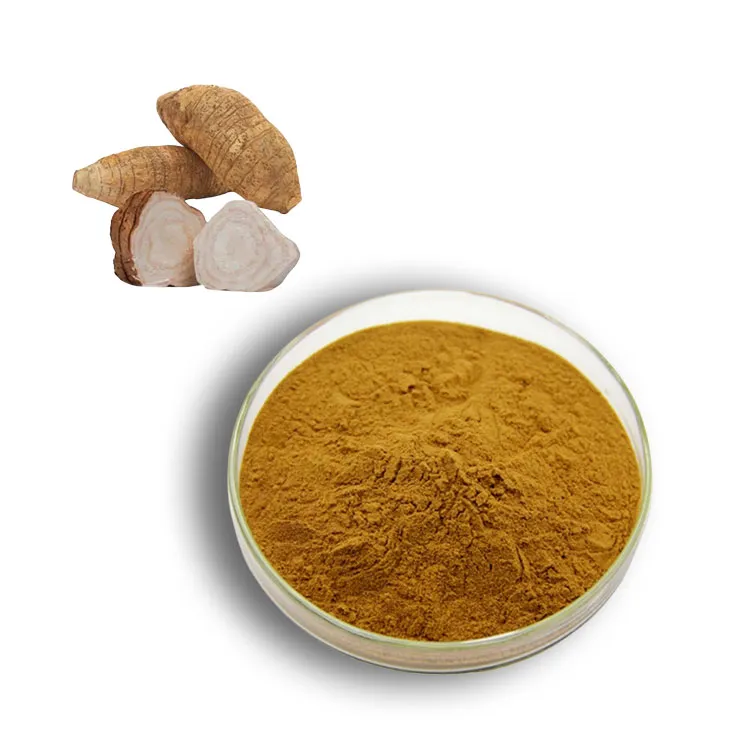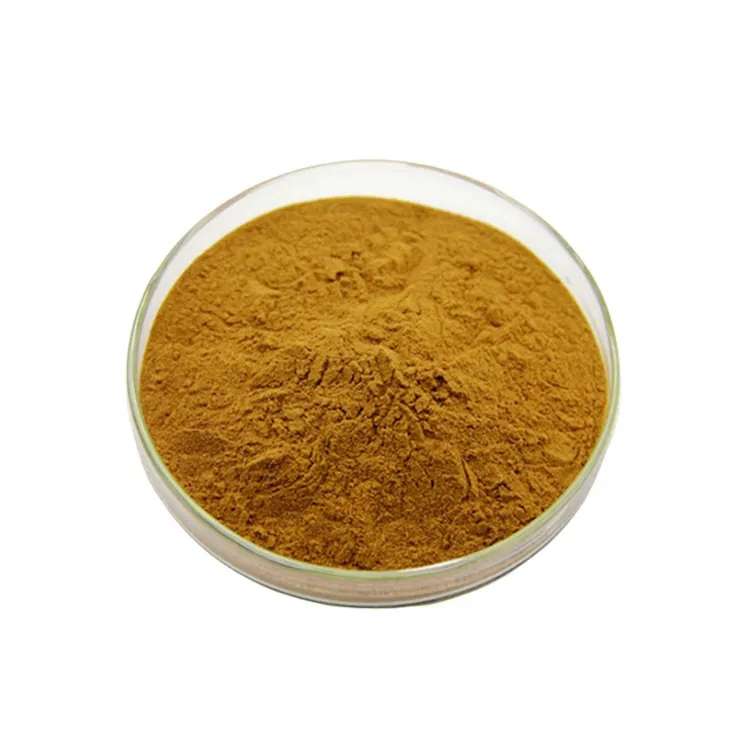- 0086-571-85302990
- sales@greenskybio.com
Pueraria lobata Extract: China vs. the United States
2024-11-29

1. Introduction
Pueraria lobata, also known as kudzu, has a long history of use in China. For centuries, it has been an important part of traditional Chinese medicine (TCM). The extract of Pueraria lobata contains various bioactive compounds with potential health benefits. In recent years, the United States has also started to show interest in this plant extract, recognizing its value in treating certain diseases and as a functional ingredient. This article aims to analyze the distinct approaches in cultivation, extraction technology, quality control, and product development between China and the US regarding Pueraria Lobata Extract.

2. Cultivation
2.1 China
China has a vast territory with diverse climates, which provides suitable conditions for the cultivation of Pueraria lobata. In China, Pueraria lobata is mainly cultivated in mountainous areas or regions with well - drained soil.
- Traditional cultivation methods are often passed down from generation to generation. Farmers are familiar with the growth habits of Pueraria lobata, such as its preference for sunny slopes and relatively loose soil.
- China also has a large - scale cultivation model in some areas. These large - scale plantations can ensure a stable supply of raw materials for the extraction of Pueraria Lobata Extract. They usually adopt scientific management methods, including proper irrigation, fertilization, and pest control.
2.2 United States
In the United States, Pueraria lobata was initially introduced as an ornamental plant and later became invasive in some areas. However, in recent years, with the recognition of its value, there has been a certain degree of planned cultivation.
- The cultivation in the US is more focused on controlling its growth to prevent it from becoming invasive again. Therefore, strict management measures are adopted, such as limiting the cultivation area and strengthening monitoring.
- Compared with China, the US cultivation is relatively new, and it is still in the process of exploring more suitable cultivation techniques. For example, research is being carried out on how to adapt Pueraria lobata to different soil and climate conditions in the US.

3. Extraction Technology
3.1 China
In China, traditional extraction methods have been developed over a long time in the context of TCM.
- One of the common traditional methods is water extraction. This method is simple and can effectively extract water - soluble components in Pueraria lobata, such as isoflavones. However, the extraction efficiency may be relatively low, and the extract may contain more impurities.
- With the development of modern technology, China has also begun to use advanced extraction techniques. For example, supercritical fluid extraction (SFE) has been gradually applied. SFE can achieve higher extraction efficiency and better selectivity, which can extract more pure Pueraria Lobata Extract with high - quality bioactive components.
3.2 United States
The United States mainly focuses on modern extraction technologies.
- One of the popular methods is the use of organic solvents for extraction. This method can extract lipophilic components effectively. However, the use of organic solvents also brings challenges in terms of solvent residue and environmental protection.
- Another trend in the US is the combination of different extraction techniques to optimize the extraction process. For example, ultrasonic - assisted extraction combined with other methods can improve the extraction rate and reduce the extraction time.

4. Quality Control
4.1 China
In China, quality control of Pueraria lobata extract is based on both traditional experience and modern scientific standards.
- From the perspective of traditional TCM, experienced herbalists can judge the quality of Pueraria lobata raw materials through appearance, smell, and taste. For example, high - quality Pueraria lobata should have a characteristic smell and a certain texture.
- Modern scientific methods are also widely used. China has established a series of quality standards for Pueraria lobata extract, including the determination of the content of main bioactive components such as isoflavones. Chromatographic techniques, such as high - performance liquid chromatography (HPLC), are often used to accurately analyze the composition and content of the extract.
4.2 United States
In the United States, quality control mainly follows the regulatory requirements of the US Food and Drug Administration (FDA).
- The FDA has strict regulations on the safety and quality of food and dietary supplements. For Pueraria lobata extract, it is required to meet certain safety and purity standards. For example, the limit of heavy metal content and pesticide residue must be within the specified range.
- American companies also often refer to international quality standards and conduct third - party testing to ensure the quality of their products. This helps to build consumer confidence in Pueraria lobata - based products.
5. Product Development
5.1 China
In China, product development of Pueraria lobata extract is deeply influenced by TCM theory.
- Traditional Chinese medicine preparations are the main forms of product development. For example, Pueraria lobata extract can be made into decoctions, pills, and powders for the treatment of various diseases according to TCM prescriptions. These products are mainly used for internal use to regulate the body's functions.
- In recent years, with the development of the health product market, Pueraria lobata extract has also been developed into health products, such as dietary supplements. These products are often combined with other traditional Chinese medicine ingredients to enhance their health - promoting effects.
5.2 United States
In the United States, product development of Pueraria lobata extract is more focused on the market demand for natural products.
- One of the main product forms is dietary supplements. These supplements are often promoted for their potential benefits in areas such as improving cardiovascular health, reducing menopausal symptoms, etc. The marketing and promotion of these products are mainly aimed at consumers who are interested in natural health products.
- There is also research on incorporating Pueraria lobata extract into functional foods. For example, some companies are exploring adding Pueraria lobata extract to beverages or snacks to provide consumers with more choices of healthy products.
6. Conclusion
In conclusion, both China and the United States have their own characteristics in the aspects of cultivation, extraction technology, quality control, and product development of Pueraria lobata extract. China has a long - standing traditional knowledge and experience in the use of Pueraria lobata, which is gradually integrating modern technology. The United States, on the other hand, is approaching Pueraria lobata extract from the perspective of modern scientific research and market demand. With the increasing global interest in natural products and traditional medicine, there is great potential for cooperation and mutual learning between the two countries in the field of Pueraria lobata extract. This will not only promote the further development of Pueraria lobata - based products but also contribute to the global health industry.
FAQ:
1. What are the main differences in the cultivation of Pueraria lobata between China and the US?
In China, Pueraria lobata has been cultivated for a long time with rich experience. The cultivation often takes into account traditional agricultural practices and the specific climate and soil conditions in different regions of China. It may be more focused on maximizing yield while maintaining traditional quality characteristics. In the US, the cultivation of Pueraria lobata is relatively new. The US may apply more modern agricultural technologies and management models, and may be more influenced by market - driven factors such as meeting the demand for specific products related to Pueraria lobata extract.
2. How do the extraction technologies of Pueraria lobata extract differ in China and the US?
In China, traditional extraction methods have been passed down and continuously improved. These may include methods such as water extraction and alcohol extraction, which are often based on the principles of traditional Chinese medicine processing. At the same time, modern extraction techniques are also being actively explored and integrated. In the US, the extraction technology may be more focused on using advanced chemical engineering and biotechnology methods. For example, more precise separation and purification techniques may be used to obtain specific active components with high purity for research and product development.
3. What are the key aspects of quality control for Pueraria lobata extract in China and the US?
In China, quality control of Pueraria lobata extract is based on a comprehensive system. It includes strict control of raw material quality, compliance with traditional Chinese medicine quality standards, and inspection of various parameters during the extraction process. In the US, quality control mainly focuses on meeting the standards of modern pharmaceutical and food industries. It may place more emphasis on accurate quantification of active ingredients, impurity detection, and compliance with relevant US regulatory requirements for safety and efficacy.
4. How do product development trends of Pueraria lobata extract vary in China and the US?
In China, product development related to Pueraria lobata extract is deeply influenced by traditional Chinese medicine theory. There are a variety of traditional Chinese medicine preparations, such as decoctions, pills, and powders. At the same time, modern health products are also being developed. In the US, product development is more likely to target specific health problems or market demands. For example, developing dietary supplements or potential drugs for treating certain diseases, mainly focusing on the scientific research evidence - based exploration of the functions of Pueraria lobata extract.
5. Are there any differences in regulatory policies for Pueraria lobata extract between China and the US?
Yes, there are differences. In China, Pueraria lobata extract is regulated within the framework of traditional Chinese medicine regulations. It is subject to strict management in terms of raw material sources, production processes, and product quality. In the US, it is mainly regulated according to the regulations of dietary supplements and drugs. Different regulatory levels are applied depending on the nature and intended use of the product, with a focus on ensuring safety and proper labeling.
Related literature
- The Traditional Use and Modern Research of Pueraria lobata in China"
- "Pueraria lobata Extract: New Insights from US - based Research"
- "Comparative Study on the Quality Control of Botanical Extracts: A Case of Pueraria lobata between China and the Western Countries"
- ▶ Hesperidin
- ▶ citrus bioflavonoids
- ▶ plant extract
- ▶ lycopene
- ▶ Diosmin
- ▶ Grape seed extract
- ▶ Sea buckthorn Juice Powder
- ▶ Beetroot powder
- ▶ Hops Extract
- ▶ Artichoke Extract
- ▶ Reishi mushroom extract
- ▶ Astaxanthin
- ▶ Green Tea Extract
- ▶ Curcumin Extract
- ▶ Horse Chestnut Extract
- ▶ Other Problems
- ▶ Boswellia Serrata Extract
- ▶ Resveratrol Extract
- ▶ Marigold Extract
- ▶ Grape Leaf Extract
- ▶ blog3
- ▶ blog4
-
Organic Maca Extract Powder Supplier
2024-11-29
-
The Best Natural Source of Ivy Extract.
2024-11-29
-
Longan extract suppliers.
2024-11-29
-
Yellow Pine Extract
2024-11-29
-
Acerola Juice Powder
2024-11-29
-
Genistein
2024-11-29
-
Reishi mushroom extract
2024-11-29
-
Citrus bioflavonoids
2024-11-29
-
Ginger Extract
2024-11-29
-
Pueraria Lobata Extract
2024-11-29
-
Bitter Melon Extract
2024-11-29
-
Tinospora cordifolia extract
2024-11-29
-
American Ginseng Root Extract
2024-11-29




















